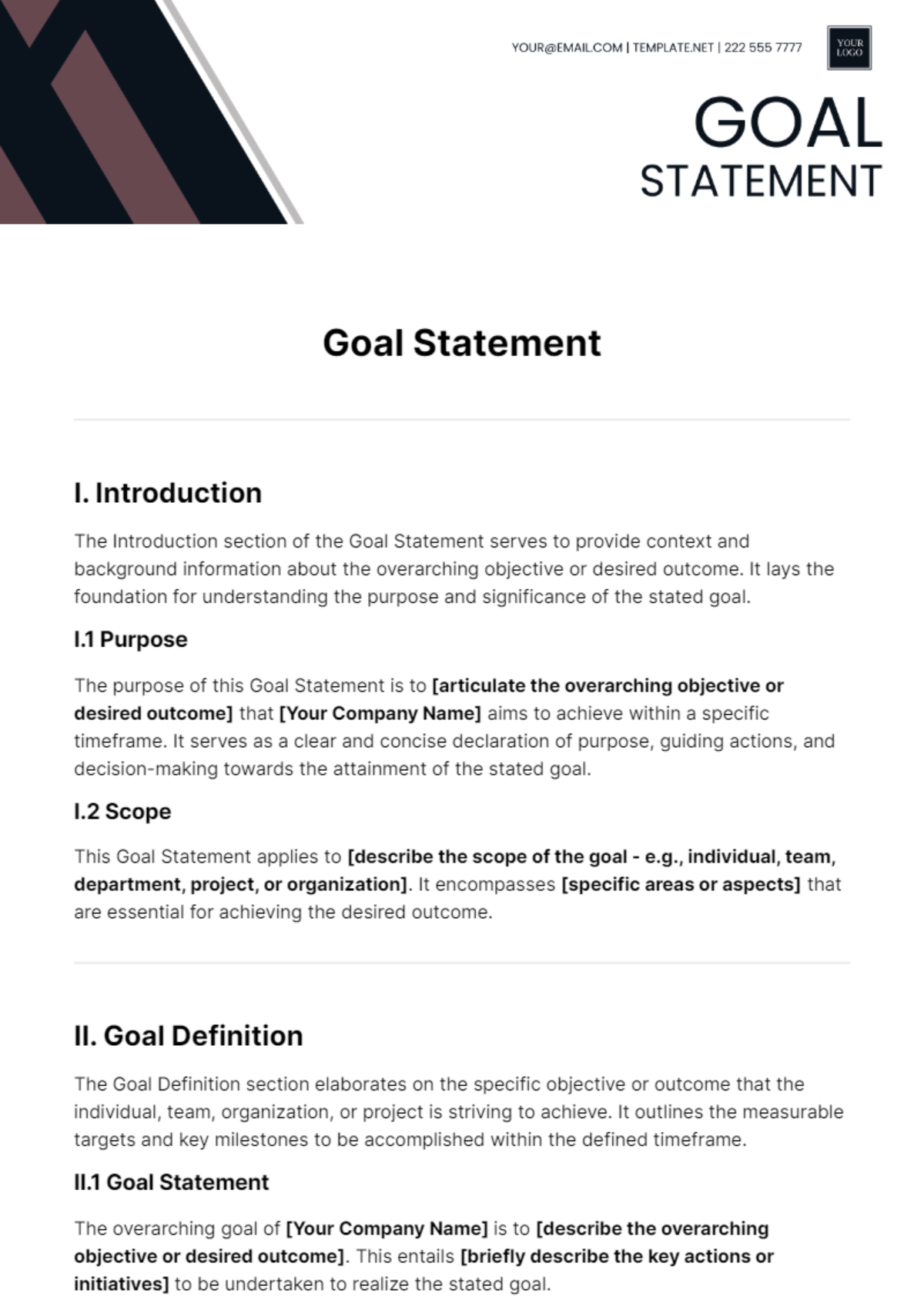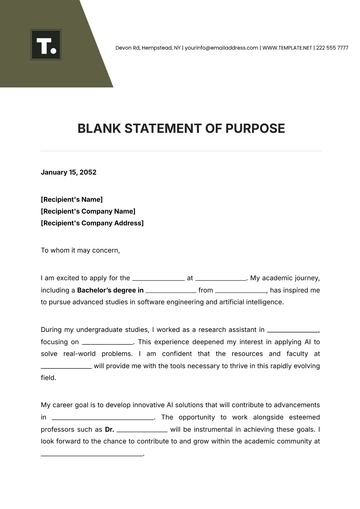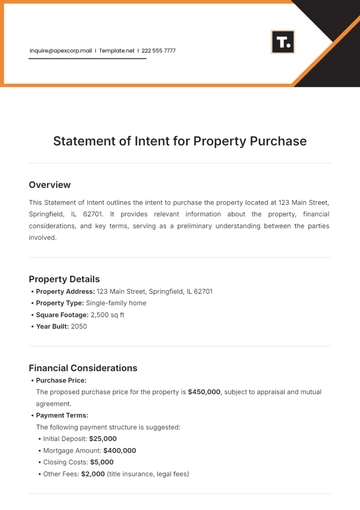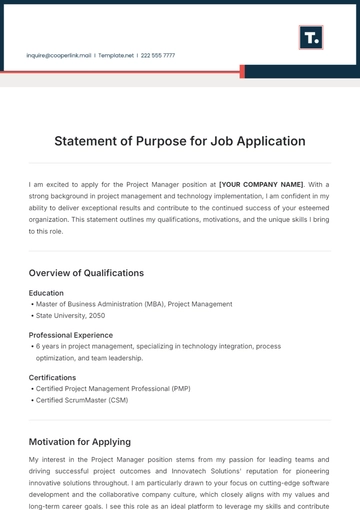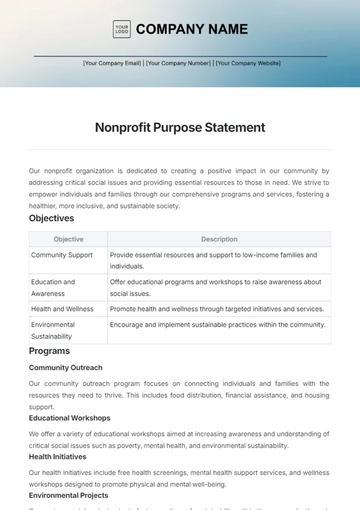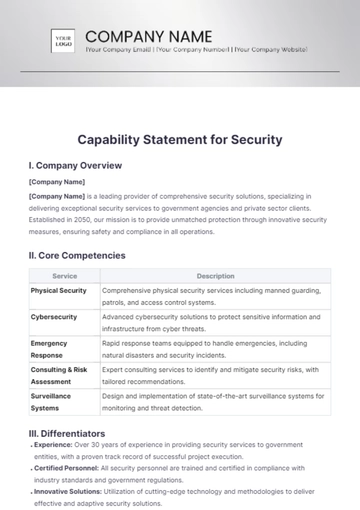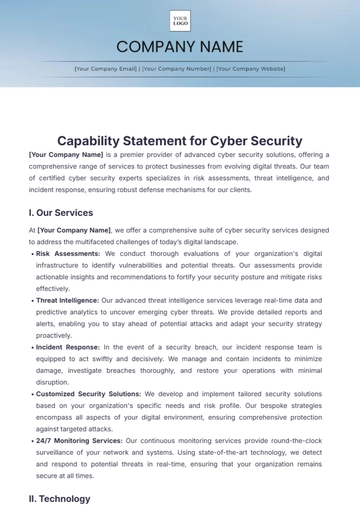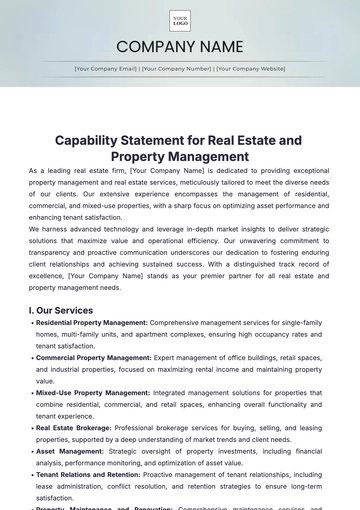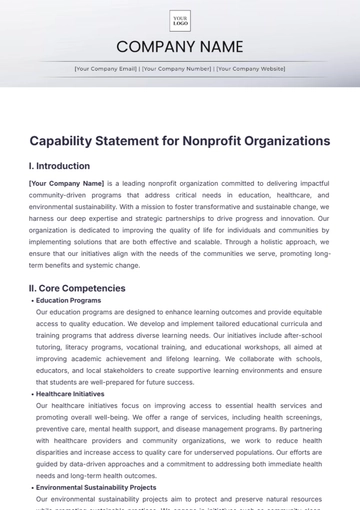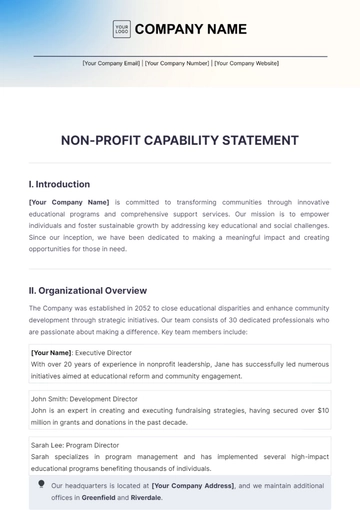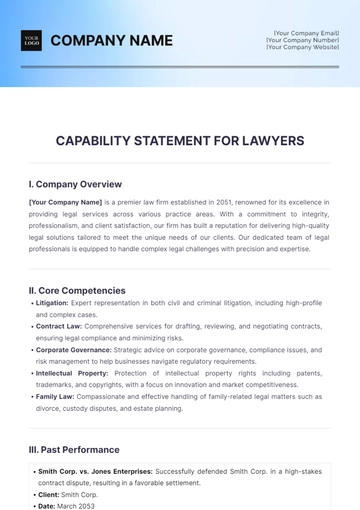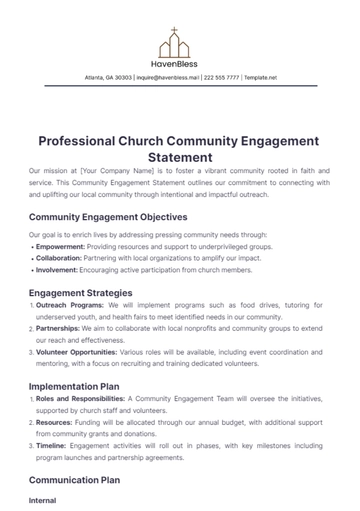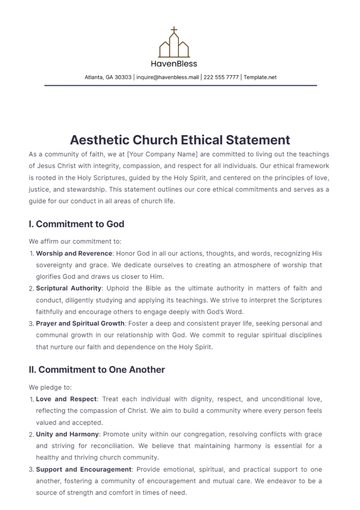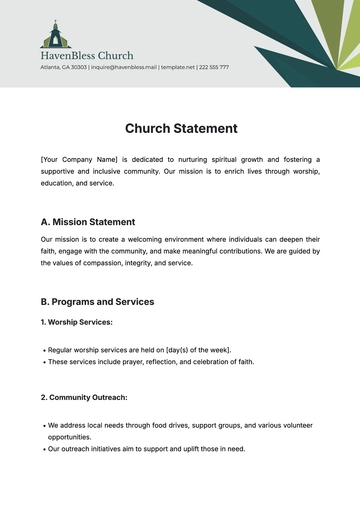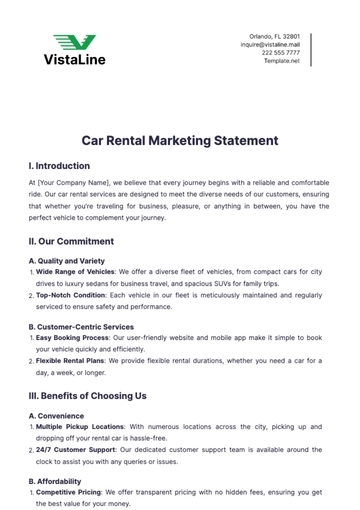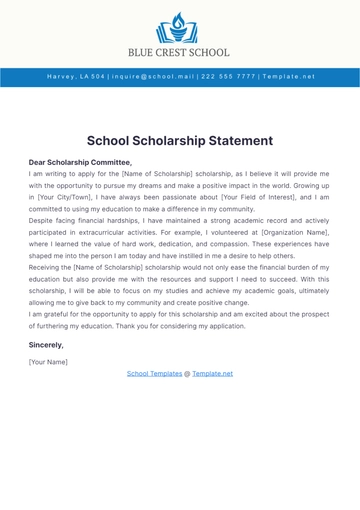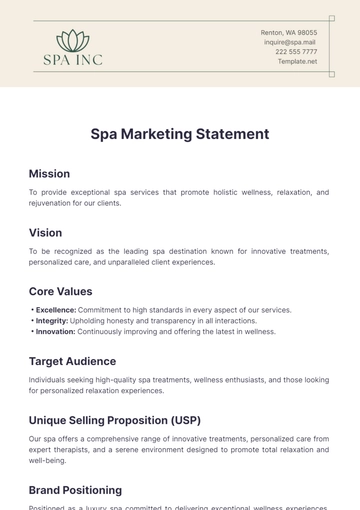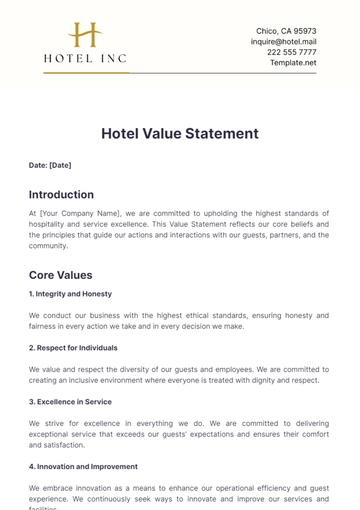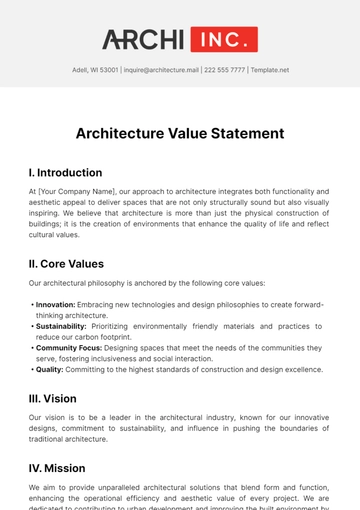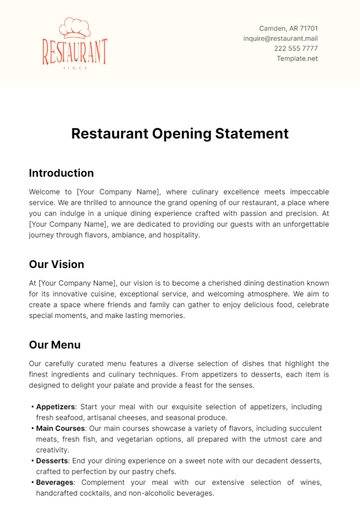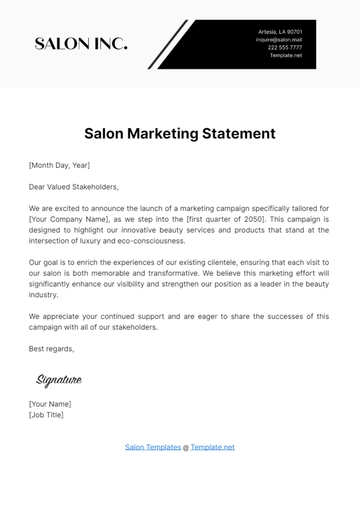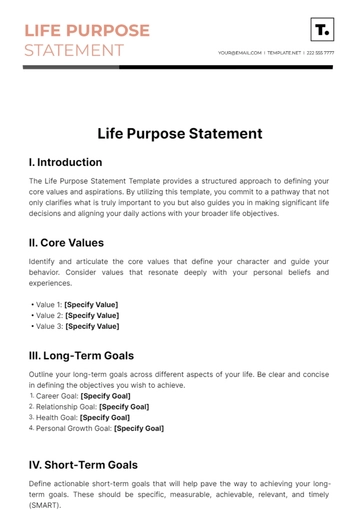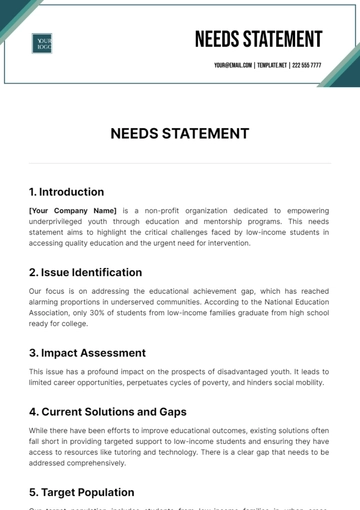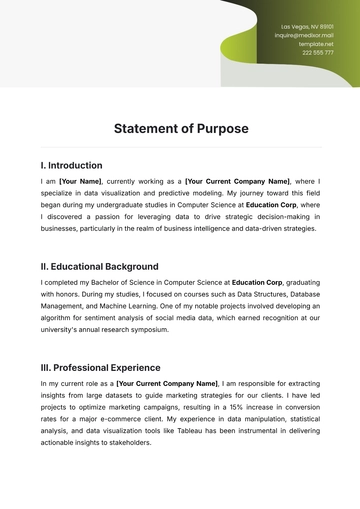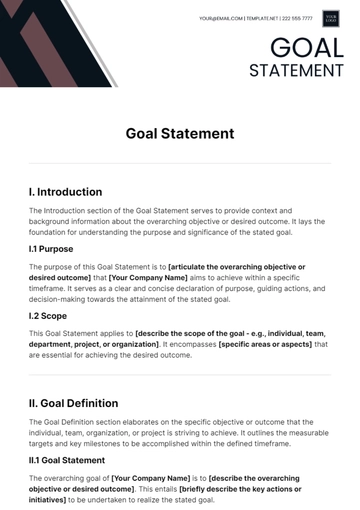Goal Statement
I. Introduction
The Introduction section of the Goal Statement serves to provide context and background information about the overarching objective or desired outcome. It lays the foundation for understanding the purpose and significance of the stated goal.
I.1 Purpose
The purpose of this Goal Statement is to [articulate the overarching objective or desired outcome] that [Your Company Name] aims to achieve within a specific timeframe. It serves as a clear and concise declaration of purpose, guiding actions, and decision-making towards the attainment of the stated goal.
I.2 Scope
This Goal Statement applies to [describe the scope of the goal - e.g., individual, team, department, project, or organization]. It encompasses [specific areas or aspects] that are essential for achieving the desired outcome.
II. Goal Definition
The Goal Definition section elaborates on the specific objective or outcome that the individual, team, organization, or project is striving to achieve. It outlines the measurable targets and key milestones to be accomplished within the defined timeframe.
II.1 Goal Statement
The overarching goal of [Your Company Name] is to [describe the overarching objective or desired outcome]. This entails [briefly describe the key actions or initiatives] to be undertaken to realize the stated goal.
II.2 Objectives
Objective | Description | Key Results | Timeline |
|---|
Objective 1 | [Specify the first objective or milestone]. | - [Measurable result 1] | [Timeline] |
| | - [Measurable result 2] | |
Objective 2 | [Specify the second objective or milestone]. | - [Measurable result 1] | [Timeline] |
| | - [Measurable result 2] | |
II.3 Success Criteria
The success of this goal will be measured by [describe the criteria or indicators that will determine the achievement of the goal]. These criteria include [list specific metrics, outcomes, or targets].
III. Implementation Plan
The Implementation Plan section outlines the actionable steps, resources, and responsibilities required to achieve the stated goal. It provides a roadmap for execution and monitoring of progress towards goal attainment.
III.1 Action Plan
Identify Tasks: List the specific tasks or activities required to achieve each objective.
Assign Responsibilities: Allocate responsibilities to individuals or teams for executing each task.
Set Timelines: Establish deadlines for completing each task or milestone.
Allocate Resources: Identify the resources (financial, human, technological, etc.) needed to support the implementation of the action plan.
Monitor Progress: Implement mechanisms for monitoring progress, identifying risks, and making necessary adjustments.
III.2 Communication Plan
Stakeholder Engagement: Identify key stakeholders and define communication channels for keeping them informed and engaged throughout the implementation process.
Regular Updates: Schedule regular progress updates and status reports to ensure transparency and alignment among stakeholders.
Feedback Mechanisms: Establish feedback mechanisms to gather input, address concerns, and make improvements as needed.
IV. Conclusion
The Conclusion section summarizes the key points of the Goal Statement and reinforces the importance of collective effort and commitment toward achieving the stated goal.
IV.1 Commitment to Excellence
[Your Organization Name] is committed to pursuing excellence in [describe the relevant area or domain] and strives to achieve the highest standards of [quality, innovation, efficiency, etc.] in all endeavors.
IV.2 Call to Action
With a clear vision and actionable plan in place, [Your Organization Name] calls upon all stakeholders to actively contribute their expertise, dedication, and collaboration toward the successful realization of the stated goal.
Statement Templates @ Template.net
